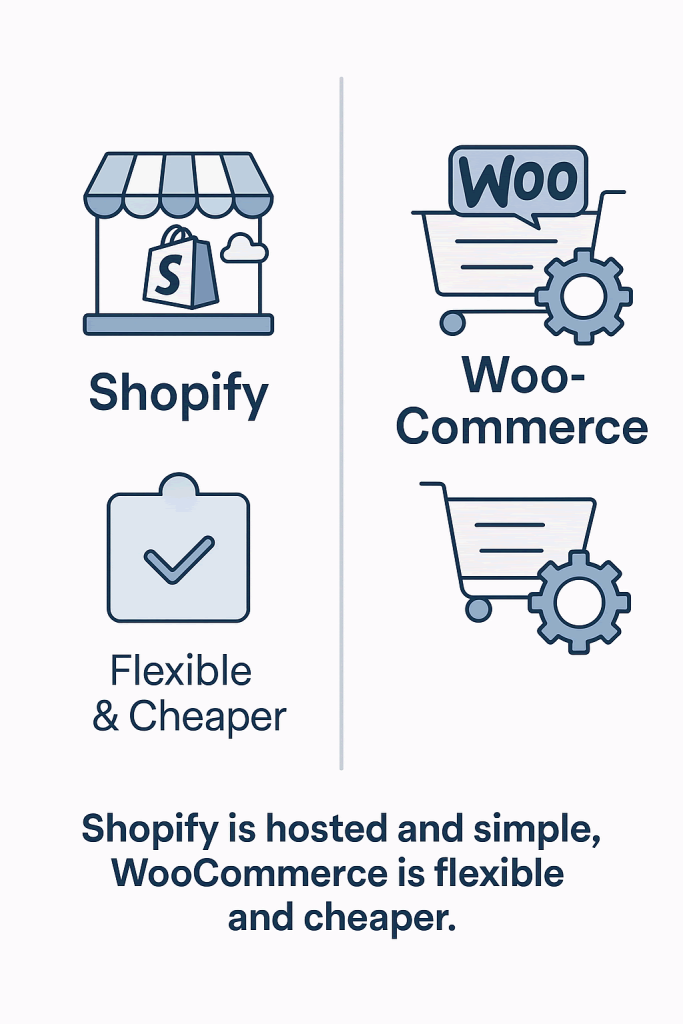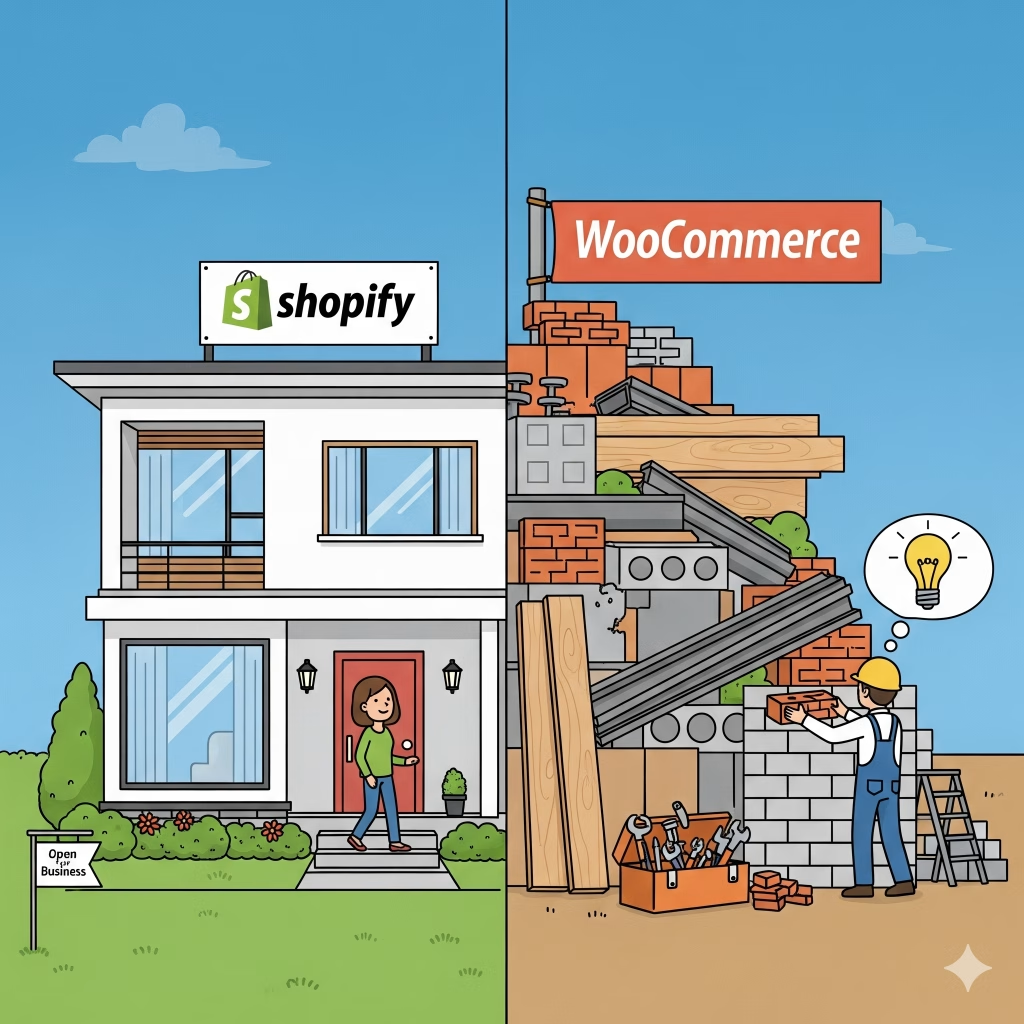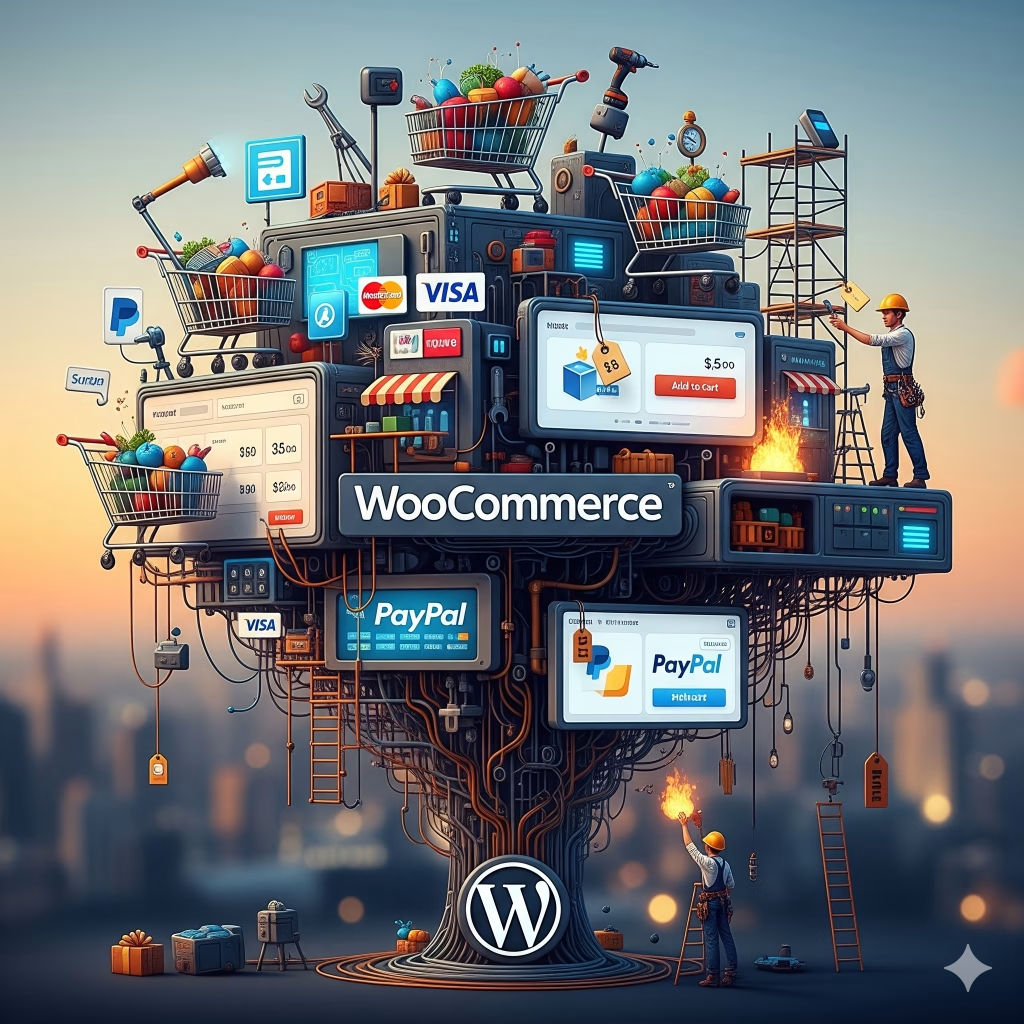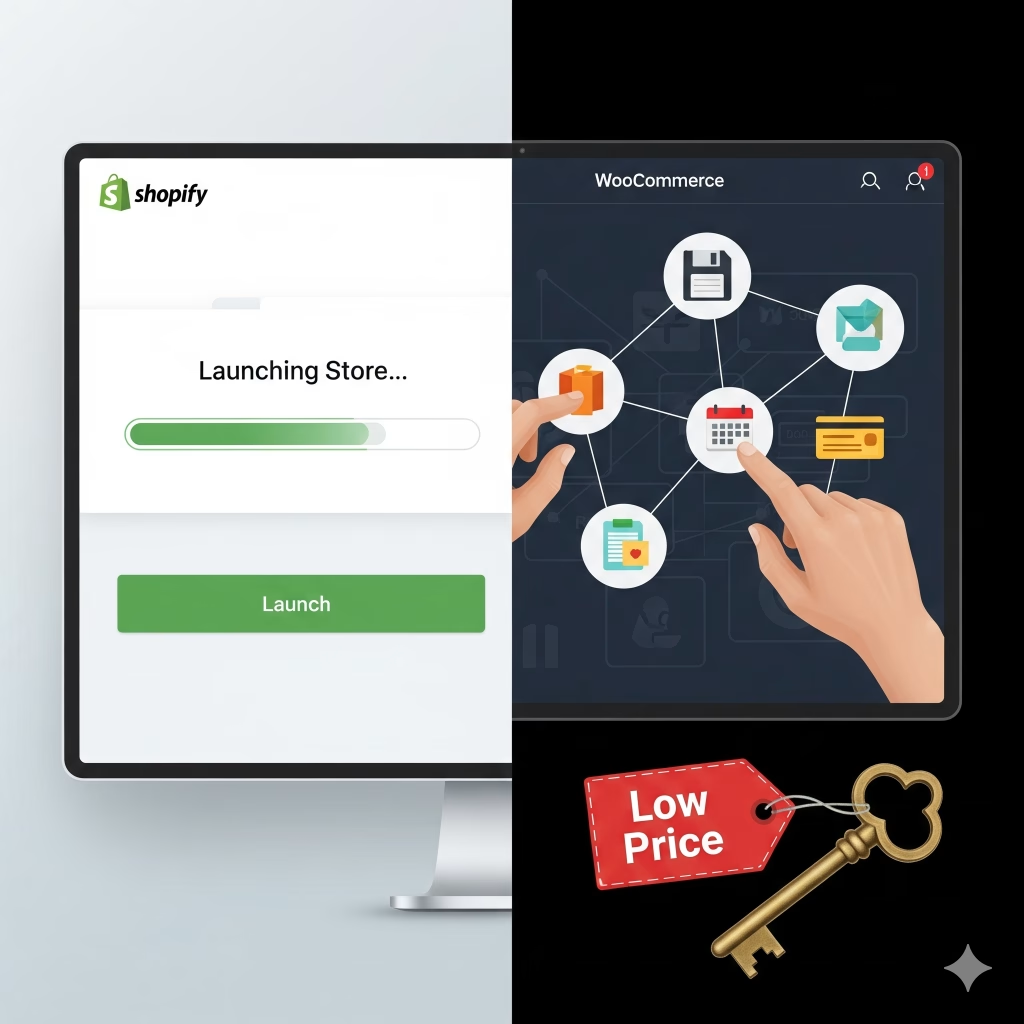Asking whether Shopify is better than WooCommerce is like asking if a prefab house is better than a pile of bricks. One offers a ready made structure with rules and limits, the other gives you building blocks with the promise of flexibility and the burden of maintenance. The comparison is constant because both platforms dominate the small to mid range e commerce space, but they represent very different philosophies. Shopify sells stability through control, while WooCommerce sells freedom through complexity.

🧩 Ease of Use
| Feature | Shopify | WooCommerce (WordPress) |
|---|---|---|
| Setup Time | Fast — ready in minutes | Moderate — hosting + WP setup required |
| Maintenance | Shopify handles everything | You manage updates, backups, security |
| Technical Skill | Beginner-friendly | Requires basic WordPress/FTP skills |
🏁 Final Verdict
| If You Want… | Choose… |
|---|---|
| 🟢 Ease and speed | Shopify |
| 🟢 Low cost, full control, AI freedom | WooCommerce |
| 🟢 No coding or server worries | Shopify |
| 🟢 Advanced customizations and ownership | WooCommerce |
📦 Inventory & Product Management
Both platforms offer:
- Variable products
- Digital downloads
- Stock control
- Category/tag systems
But WooCommerce supports more:
- Custom product types (software, appointments, memberships)
- Plugins for B2B, licensing, etc.
✅ Winner for flexibility: WooCommerce
🚀 Performance & Scaling
| Feature | Shopify | WooCommerce |
|---|---|---|
| Hosting | Fully managed | You host it (e.g. on RackNerd) |
| Speed | Fast globally | Depends on your server & optimization |
| Scaling | Effortless scaling | You manage server resources |
✅ Winner for scalability without headaches: Shopify
💰 Pricing
| Cost Area | Shopify | WooCommerce |
|---|---|---|
| Platform Cost | $39–$399/month | Free (you pay for hosting/plugins) |
| Plugin/App Cost | Can get expensive | More free options |
| Hosting | Included | Separate (e.g., $5–15/month) |
✅ Winner for cost-efficiency: WooCommerce
🧠 AI, SEO, and Custom Integrations
| Feature | Shopify | WooCommerce |
|---|---|---|
| AI Plugins | Limited to Shopify App Store | Many open-source and commercial options |
| SEO Control | Good but restricted | Full SEO access and schema control |
| Custom AI Bots | Difficult without Shopify Plus | Easy with OpenAI, Mistral, LangChain |
✅ Winner for AI & SEO customization: WooCommerce
💳 Payment Options & Fees
| Feature | Shopify | WooCommerce |
|---|---|---|
| Payment Methods | Stripe, PayPal, Shopify Payments | Stripe, PayPal, bank, crypto, more |
| Transaction Fees | Extra 1%–2% if not using Shopify Pay | No platform fees, just gateway fees |
| Flexibility | Limited outside app store | Total control, custom plugins allowed |
MORE LINKS:
E-commerce store
Sell digital products
Integrate payment gateways
Manage inventory
Manage bookings
Cart recovery
Tax & shipping zones
Discount coupons
Store ownership
SHOPIFY VS WOOCOMMERCE ON YOUR E-COMMERCE WEB STORE
Shopify’s strength is that it is purpose built. It was designed from the ground up to run online stores, so the infrastructure, checkout flow, and hosting environment are tightly controlled. For the merchant this means less worry about performance, fewer security headaches, and faster time to launch. You pay a monthly fee, add your products, and the system works. The trade off is obvious. Your store exists inside Shopify’s rules, and what cannot be done with apps or themes simply cannot be done at all.

WooCommerce, running on WordPress, is the opposite. It bolts commerce features onto a general purpose CMS. This gives you enormous customization power but also enormous responsibility. You can bend WooCommerce into shapes Shopify would never allow, but every plugin you add becomes a liability, every theme adjustment introduces risk, and every server setting requires tuning. What looks like flexibility on day one often becomes a maintenance treadmill once the site grows.
✅ Winner for control and lower fees: WooCommerce. ✅ Winner for simplicity: Shopify
Performance highlights the divide. Shopify maintains its own optimized infrastructure, which keeps page loads consistent even under traffic spikes. WooCommerce relies on your hosting provider, and most shared hosting plans collapse once orders increase. To reach Shopify level reliability you end up paying for managed hosting, caching, CDNs, and a roster of performance plugins. The supposed savings of WooCommerce evaporate quickly when serious traffic arrives.

Cost is another illusion. Shopify’s fees are predictable but unavoidable, while WooCommerce starts free and slowly drains your budget with paid extensions, premium themes, and infrastructure upgrades. Both models converge at a similar total expense once you run a store with meaningful revenue. The difference is psychological. Shopify makes you feel like a tenant paying rent, while WooCommerce makes you feel like an owner constantly patching a leaky roof.
🎨 Design & Customization
| Feature | Shopify | WooCommerce |
|---|---|---|
| Themes | Limited (many paid) | Thousands of free and premium themes |
| Custom Code | Limited unless on Shopify Plus | Full PHP/CSS/HTML control |
| Flexibility | Drag-and-drop for most stores | Full stack customization |
✅ Winner for design freedom: WooCommerce
In the end the question is not which platform is better in the abstract but which trade offs you prefer. Shopify is the safer choice for merchants who want to sell without thinking too much about technology. WooCommerce suits those who demand full control and are willing to handle the technical baggage that comes with it. Both ecosystems are profitable for their creators, and both survive not because they are perfect but because no rival has solved the balance of control and freedom any better.
🎨 Design & Customization
| Feature | Shopify | WooCommerce |
|---|---|---|
| Themes | Limited (many paid) | Thousands of free and premium themes |
| Custom Code | Limited unless on Shopify Plus | Full PHP/CSS/HTML control |
| Flexibility | Drag-and-drop for most stores | Full stack customization |
✅ Winner for design freedom: WooCommerce
Shopify and WooCommerce are two of the most popular platforms for building online stores, but the right choice depends entirely on what matters most to you. Shopify is a hosted, all-in-one solution that’s built for ease of use. It handles everything from hosting and security to updates, so you can focus purely on selling. WooCommerce, on the other hand, is a plugin for WordPress that offers more flexibility and control, especially if you already have a WordPress site or want to customize your store down to the smallest detail.
If convenience and speed are your top priorities, Shopify might be the better fit. You get a streamlined setup, access to themes and apps, and a support team to help when needed. It’s ideal for beginners or those who want a low-maintenance experience. However, it does come with monthly fees, transaction charges (unless you use Shopify Payments), and limitations in terms of custom development and data ownership.

✅ Winner for plug-and-play simplicity: Shopify
WooCommerce is a better choice if you want full ownership of your site, complete design control, and the ability to expand functionality through plugins or custom code. You’ll need to manage hosting, security, and updates yourself (or through a developer), but you gain far more freedom in how your store looks and operates. This makes WooCommerce especially appealing to developers, agencies, or businesses with specific technical needs or complex product catalogs.

Ultimately, your decision should reflect your goals. If you need something fast, secure, and simple, Shopify delivers a solid, all-inclusive platform. If your priority is customization, long-term scalability, and tighter control over your data and branding, WooCommerce gives you the tools to build exactly what you need. Both platforms are capable it’s all about which one better fits your workflow and vision.


